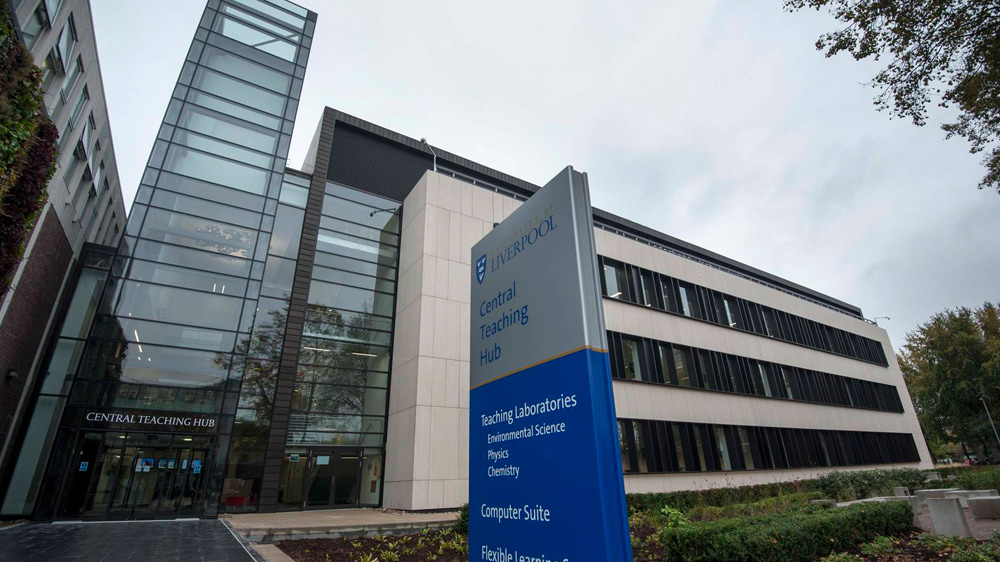Excellence in teaching and research facilities

The Central Teaching Hub (CTH) consolidates much of the undergraduate teaching within the Faculty of Science & Engineering.
The University has made a total investment of £28.6m in the new building and new teaching equipment. The adjacent general teaching rooms and lecture theatres have been refurbished to provide a uniformly high quality student experience.
The CTH has driven curriculum redesign, with relevant disciplines making use of common skills modules, supported by degree specific lectures.
The impact has been especially great in Physics, where students who previously had separate laboratory classes now have a 30-50% increase in practical work in the first and second years, countering the reducing amount of practical physics in schools and creating greater continuity with third year work. The curriculum changes have been coordinated by a senior academic lead, supported by a new University Lecturer post, in each of the three core areas of Chemistry, Physics, Environmental Sciences and Archaeology. These changes enable a utilisation rate of around 48% compared to a University average of around 20%.
There will also be more sharing of equipment such as gas chromatography, microscopes and radiation measurement. Despite a 35% increase in relevant student numbers, the CTH requires no additional technical support due to more multiskilling and adoption of a two shift pattern with slightly longer hours in term-time compensated by additional annual leave during vacations.
Accessibility
To provide an inclusive and integrated teaching experience the CTH is a fully DDA compliant building, exceeding current legislative requirements and demonstrating the University’s commitment to maintaining the highest standards of building quality but also ensure it is accessible and useable by all.
Sustainability
The CTH has been designed to meet the BREEAM “Excellent” criteria, which is extremely demanding for laboratory buildings due to the large amounts of energy consumed and the difficulty in minimising losses
To compensate for this CTH has constructed as a long span steel frame with precast concrete floors units, clad in Corten steel and limestone veneer. Exposed concrete surfaces provide thermal mass to improve energy efficiency, which has been paramount in the building’s design with passive ventilation where possible, solar shading, low velocity air distribution, chilled beams, high floor to ceiling heights to maximise day lighting, use of heat and power from a campus Energy Centre, and solar heating.